By Neenah Payne
The Big Oyster: History on the Half Shell: “Before the 20th century, when people thought of New York, they thought of oysters. This is what New York was to the world— a great oceangoing port where people ate succulent local oysters from their harbor.” – Mark Kurlansky, The Big Oyster.
Slavery, Freedom and The Chesapeake points out:
“Some of the most restrictive legislation was designed to prevent blacks from participating in maritime industries, the oystering business in particular and especially in a management or ownership capacity.”
A Film-Worthy Fascinating Double Life!
The life of Thomas Downing would make a thrilling film! While his restaurant served the NYC elite in a fancy dining room, the upstairs and basement served as an important stop on the Underground Railroad for runaway slaves! Talk about a very courageous double life -- James Bond material! The Fugitive Slave Act of 1850 made it illegal to help or harbor escaping slaves, Yet, Downing did it while police, mayors, and other government officials dined in the same building! He was willing to run those risks day in and day out for years! This is a hero writ large!
“Between 1830 and 1860, Thomas Downing operated the finest oyster shop in the city on the corner of Wall and Broad, Downing’s Oster House -- the future home of JP Morgan Chase. Born in Virginia in 1791 as a free Black man, Downing moved north and opened a restaurant catering to New York’s most prominent citizens. A contemporary account describes his establishment as “the very model of comfort and prosperity, with its mirrored arcades, damask curtains, fine carpet and chandeliers”.
But unbeknownst to his blue-blooded customers in the dining room, he used the upstairs rooms as an important stop in the Underground Railroad -- the secret network of abolitionists that helped slaves escape to Canada. Downing made a fortune as a restaurateur, and spent much of it promoting the anti-slavery cause. Thomas Downing, leader and entrepreneur.”
Thomas Downing & Oyster History: “He revolutionized the oyster bar – but his other, secret, work was more important.”
Unfortunately, the Billion Oyster Project on Governor’s Island in New York reports only that African American oystermen served on oyster boats. It does not mention Downing’s pivotal role as Oyster King of New York when NY was the world’s oyster capital! See New York’s Ambitious Billion Oyster Project.
The Vibrant and Complex History of Black Oyster Culture points out:
“From their roots in slavery to modern day shuckers, oysters have always been an integral part of the Black community….Zella Palmer, culinary historian and Dillard University’s director of the Ray Charles Program in African-American Material Culture, says that Black men created this bustling community of oystermen, shrimpers, and fishermen. 'Traditionally, it was always Black folks who were predominantly in the seafood business and that gets written out of history today,' Palmer says.”
Throwback Thursday w/ Jim Duffy - Thomas Downing
“In today's Throwback Thursday, Secrets of the Eastern Shore author, Jim Duffy introduces us to Thomas Downing who, in the mid-1800s, reinvented the oyster business.”
Chincoteague Character of the Day: Thomas Downing, the ‘Oyster King’ of NYC
"Growing up in Chincoteague, Va. in the 1790s and the first decade of the 1800s, Thomas Downing spent much of his time fishing, oystering, digging up clams, and catching terrapins. He must have spent a good bit of time around the kitchen as well, considering the way he grew up to become one of the most famous restaurateurs in New York City—the 'Oyster King of New York,' in fact.
In one respect, Thomas was luckier than most blacks on Virginia’s Eastern Shore: He was born a free man, thanks to a then-newfangled faith called Methodism. Thomas’s parents were enslaved up until an itinerant preacher… showed up at some point in the 1780s and filled their owner with such 'religious fervor' that he freed his slaves….
The reason why Thomas left Virginia and headed north at age 21 is hard to nail down for certain. …
Finding His Way to the Oyster Business
What we do know is that Thomas landed in Philadelphia and spent six or so years there…. He moved to New York City in 1821 and immediately started selling oysters out of his home on Pell Street.... He finally went all in on oysters in 1830, opening up a 'refectory' in the shadow of the New York Stock Exchange at 5 Broad Street.
Downing’s son, George, used a wonderful phrase to describe his father–as a 'man who knew not tire.' And indeed, Thomas Downing went after his new endeavor in indefatigable fashion. He would wake at 2am and row himself across the North Hudson River over to the Jersey Flats, where he would tong for the oysters that he would then bring ashore and serve to customers all day long. The business took off. Downing soon expanded his operation into two adjacent buildings at 3 and 7 Broad Street.
Oysters were a huge deal in New York City back then, with an estimated $6 million in annual sales by street vendors and in so-called 'oyster cellars' that dotted the city’s streets. Most of those latter operations really were located below street level—you had to step down to enter them. They tended to be dark, cheap, and crowded. Fisticuffs were commonplace. Women steered clear of such joints, as did rich men who regarded themselves too refined to hang out with ruffians in the cellar.
Thomas Downing’s entrepreneurial genius involved going upscale. He did for oysters in New York in the mid-1800s what Starbuck’s did with coffee shops in our times. Where the menu at most other oyster cellars consisted in its entirety of raw, fried, and stewed bivalves, Downing’s Oyster House offered 'scalloped oysters, oyster pie, fish with oyster sauce and an unusual specialty, poached turkey stuffed with oysters.' The decor at Downing’s was 'the very model of comfort and prosperity, with its mirrored arcades, damask curtains, fine carpet and a chandelier.'
Rich white guys felt just fine about bringing their wives and daughters to Downing’s place. And they came in droves—the merchants, the bankers, the Wall Street traders, the politicians, and more. Downing’s Oyster House gets mentioned quite often in journals of the rich and famous from those days. Interestingly, most of those journal entries don’t even mention the color of Downing’s skin.
Downing’s most famous catering gig came when Mayor Philip Hone threw the 'greatest affair of modern times' to introduce the famous British writer Charles Dickens and his wife to the elite of New York society. Downing earned an eye-popping $2,200 that night, serving oysters to 2,500 guests. Once he hit it big, Downing no longer had time to do his own tonging. But he worked as hard as ever, showing up at the oyster dock at midnight so as to be there when the very first boats rolled in. Sometimes, he even took a boat out into the river to meet incoming oystermen out there and choose the very best of their catch.
Here is another sign of just how smart a businessman he was. After buying all the oysters he would need for a day, Downing often lingered at the docks, waiting for the moment when other buyers would start haggling over prices with oystermen. Downing jumped into those conversations, bidding up the price even as both he and the oystermen knew that Downing didn’t really want to buy any more oysters. It was gestures like that that left those oystermen feeling all warm and fuzzy about doing business with Downing’s Oyster House.
A Leading Light in the Causes of His Time
Incredibly, Downing found time for all sorts of other pursuits as well. He belonged to several fraternal organizations, including the Masons and the Odd Fellows. He was active in the New York Society for the Promotion of Education among Colored Children and the New York African Society for Mutual Relief, which helped black widows and orphans, as well as black men unable to work due to injury or disability.
He helped to found the Committee of Thirteen, which came to the aid of the free black men and women who were being kidnapped and sold into slavery along the sold-called 'Reverse Underground Railroad.'
He was friends with several famed abolitionists, including Eastern Shore natives Frederick Douglass and Henry Highland Garnet.
(Downing’s son, George, would become a noted leader in New York City’s abolitionist movement as well.)….
Downing was a proud man who carried himself with a 'kingly bearing.' Several accounts of his life in books and journals include an anecdote in which he refused to give up his seat on a street car a full century before Rosa Parks would do the same on a bus in Montgomery, Alabama. He also had a sharp sense of humor. During a cholera epidemic, there were worries that bad oysters might be involved in causing or spreading the disease. Asked about this, Downing replied, 'If any gentleman can prove he died of the oysters I work in, I’ll pay his expenses to Greenwood,' referring to one of New York’s most famous cemeteries….
His death on April 10, 1866 was noted prominently by any number of New York newspapers. In fact, the New York City Chamber of Commerce closed its offices for a day so that everyone could attend his funeral. A decade before that, in 1855, the New York Evening Post had this to say in a lengthy profile of the 'Oyster King of New York:' To those who do not know Mr. Downing (everyone knows him here), it may be proper to say that he is one of the most respectable and aged colored men in this city. His private character is without reproach; he has made a large fortune as the keeper of a refectory, which is frequented daily by throngs of the principal bankers and merchants of Wall and Broad streets and their vicinity.
… [D]uring his long and uninterrupted success [he has] never forgotten the humility and modesty which is one of his most noticeable characteristics and it would be difficult to detect the slightest change wrought in the character or deportment of the old man since he became what he has been for many years, a man of fortune, except in the magnitude of his donations for the relief of his oppressed race.
–Posted by Jim Duffy on Feb. 9, 2019. Copyright Secrets of the Eastern Shore and Whimbrel Creations, LLC. All rights reserved.”
THE RAGS-TO-RICHES TALE OF A CHESAPEAKE OYSTERMAN
NY Oyster King and Abolitionist
Thomas Downing - NYC Oyster King & Abolitionist
“Did you know that in the 1800s oyster bars in New York City were located in the basements of buildings? They were called oyster cellars, refectories (a room for communal eating) or dives (presumably for diving down the stairs). These cellars were distinguished by the red lanterns hung above the cellar stairs. The only women welcome in these establishments were prostitutes. Did you know that most oyster cellars were owned and operated by African Americans? The most famous of these proprietors was a man named Thomas Downing, who at the time of his death was one of the wealthiest men in New York City.
Thomas Downing (1791-1866) made oyster cellars respectable. He turned his into one of the fanciest eating establishments in New York City. He innovated by welcoming wives and even children when accompanied by their husbands and/or fathers, of course. He only served the best oysters from each day’s catch and his establishment was famous the world over. He was also a tireless abolitionist who was barred from citizenship until the Civil Rights Act of 1866 became law, the day before he died.
Thomas Downing was born in Chesapeake Bay oyster country, specifically on Chincoteague Island, on the Eastern Shore of Virginia. His parents had been enslaved by a sea Captain who released them from slavery when he realized that owning slaves was counter to his Methodist Faith. The Captain, John Downing, set up a Methodist Meeting House and Thomas’ parents, who had adopted his name, became the paid caretakers of the property. This income made it possible for them to buy some land where they and their children provided for themselves. They made extra money by selling a variety of shoreline animals, including terrapin, clams and oysters. His hospitable parents welcomed their wealthy neighbors into their home. Their children were educated by the same tutor as their neighbors’ children, including Henry A. Wise who would become Governor of Virginia (1861-1865).
Thomas joined the army and followed it to Philadelphia at the end of the War of 1812. In Philadelphia, Thomas oystered, was a valet, met and married Rebecca West, and opened his first oyster joint. He moved on and by 1820 was registered as an oysterman in New York City. (At this time, the majority of registered oystermen in New York Harbor were also of African descent). Thomas began in New York by raking and tonging for oysters, bringing his catch in and selling it on the street. Oysters were so abundant and therefore cheap that this was certainly not the road to riches. More money was made by turning your basement room into an oyster cellar where oysters were the loss-leader for booze. However, oyster cellars were also abundant and cheap and in order to separate from the others, Downing innovated in several ways.
The Thomas Downing Oyster House, opened in 1825 at 5 Broad Street, was indeed located in the basement apartment, but it was decidedly upscale. This fantastic location was a few blocks away from Five Points, the African American neighborhood where most of the downtown oyster dives were located, and in the heart of the business district. It was decorated to perfection with damask curtains, gilded mirrors and a sparkling chandelier. He further innovated by welcoming wives -- as long as they were accompanied by their husbands.
According to Mark Kurlansky, in his book The Big Oyster, Downings was a place “for businessmen who preferred discussing their affairs rather than having them ... conveniently located near the Customs House, the banks, the Merchants Exchange, and important stores. It stood on the same street where the first oyster cellar had opened in 1763.” His place was exclusive and very popular. One of the reasons was his oysters were the best.
In the wee hours of the morning, Downing would row out to the oyster skiffs and pay a premium for the best oysters on each boat.... He further clinched this market by welcoming these oyster captains at his oyster house.
Thomas Downing antique pickled oyster crock. Spotted and photographed by Call Nichols while visiting Copps Island Oysters in Norwalk, CT.
By 1835, Downing expanded his business to the adjacent buildings (3 and 7 Broad Street) and diversified into a catering, take out and international mail order business. He shipped large quantities of live, fried and pickled oysters all over Europe. Queen Victoria was so taken with the oysters he shipped her that she sent him a gold chronometer watch, which became a treasured family heirloom....
Charles Dickens, however, was unimpressed by the large number of wealthy patrons and the enormous variety of oyster dishes one could get at Downings. He liked both his oysters and his people unadorned. In a backhanded compliment to Downing’s popularity he said he preferred the less crowded oyster cellars of Five Points where oyster lovers, “copying the coyness of the thing they eat, do sit apart in curtained boxes, and consort by twos, not by two hundreds.”
You might think this was enough work for an industrious man, but as his son George attested, his dad never tired. Thomas was also an ardent abolitionist. During this heyday, Thomas was simultaneously running his oyster empire and with the help of his family, one of the most important stops on the Underground Railway. His storage rooms had running salt water, bottles of wine, pickled oysters and fugitives. People escaping bondage – on their way to Canada and freedom.
For decades, he supported the African Free School where his five children were educated. He was a vestryman at the Free African Church of St. Philip, located on Center Street in lower Manhattan. He was a founder of the all-Black Anti-Slavery Society of the City of New York. In 1837, when NY abolished slavery, he became a founding member of the Committee of Thirteen – an organization dedicated to protecting free people from being kidnapped to the South where they would be sold into the slavery system.
1838, he sued the New York trolley system after a driver beat him up when he refused to get off the trolley. This was the beginning of a 20-year fight to desegregate the trolleys. Downing’s case was thrown out by an all-white jury. But his case was followed with a legal victory by abolitionist Elizabeth Jennings in 1855 who also refused to leave her seat and the New York trolley system was desegregated. This happened 100 years before Rosa Parks helped to launch the Montgomery Bus boycott which led to the desegregation of all public transportation in 1956.
Thomas Downing died on April 10, 1866; one of the wealthiest men in New York City. He was only a legal citizen of the United States for one of those days. The Civil Rights Act of 1866 declared all male persons born in the United States to be citizens, “without distinction of race or color, or previous condition of slavery or involuntary servitude.” President Andrew Johnson vetoed this legislation because he thought the federal government should not interfere between the states and their citizens. On April 6, the Senate voted 33-15 to override Johnson’s veto and Congress followed suit with a 122-41 vote and the Act became law on April 9th, 1866.
Downing’s Obituary was published in the New York Times on April 12, 1866. Here it is in its entirety:
'The well-known colored caterer and oysterman, THOMAS DOWNING, died on Tuesday last, at his residence in this City. The deceased was in the 75 year of his age, having been born in Accomac County, Va., in 1791. His mother, a slave, was a woman of great piety and much respected by her owners, the DOWNINGS. She and her husband were subsequently freed by Capt. DOWNING, and THOMAS was then sent to school studying under the same master as HENRY A. WISE.
During the war of 1812, THOMAS, being then about 21 years of age, came North and joined the army. He subsequently went to Philadelphia and became a domestic servant. In 1819 he came to this City, and after setting up as a kalsominer, opened an oyster saloon and eating house in Broad-street, which soon became famed for the excellence of the viands to be procured there. Here he remained until a year or two ago, acquiring a large fortune, when he moved his establishment to the Merchants’ Exchange.
During the great fire of 1835, Mr. DOWNING, by his presence of mind was the means of rendering essential service to his fellow citizens. The weather was so cold that the water thrown by the fire engines froze as it left the pipes, and the flames raged almost unchecked.
Mr. DOWNING, in conjunction with the late Mr. GERALD HALLOCK of the Journal of Commerce, discovered some barrels of vinegar behind a fence. The heads of the barrels were speedily driven in and the vinegar successfully used to stay the progress of the flames.
Mr. DOWNING raised a large family of children, to whom he gave a liberal education, sending some of them to Europe for that purpose. Only two, GEORGE T., the eldest, and PETER W., the youngest, survive their father. The deceased was connected with the higher degrees of Masonry, was an Odd Fellow, and for a great many years had been a vestryman of St. Philip’s Protestant Episcopal Church. He took a prominent part in all measures for the elevation of the colored race, and lived an active and useful life.
His remains will be taken on Friday, the 13th, at 1 o’clock from the residence of Rev. JOHN PETERSON, No.1 Wooster-St., to Philip’s (Episcopal) Church, Mulberry Street, between Houston and Bleecher Streets, where the funeral services will be held.'"
GEORGE THOMAS DOWNING: PROMINENT BUSINESSMAN AND CIVIL RIGHTS ACTIVIST
“When Thomas Downing died in 1866 at age 75, the New York Chamber of Commerce did something it simply doesn’t do on a weekday: It closed. Its members, among them the most prosperous merchants in Manhattan, had decided they’d rather go to Downing’s funeral. Downing’s wake was reported by The New York Times in stirring detail, from the 'long line of carriages, well filled with mourners' to multiple delegations of Freemasons 'in full regalia.' Crowds thronged the streets in front of a church that was packed from its doors to its pulpit, waiting for a chance to view 'for the last time the face of him who was well known to all.'
Downing was a towering figure, the acknowledged 'oyster king of New York' when New York was oyster capital of the known universe…. Downing’s rise from his childhood raking oysters on Chincoteague Island to the upper echelons of New York society life — while all the while using his oyster cellars as a stop on the Underground Railroad — is one of the more remarkable stories of its time. But it’s also one of the lesser known, especially in his home state of Virginia.
Downing’s oyster hall helped form our modern idea of the luxury oyster house, Kurlansky says. But his tale nonetheless fell into into deep obscurity for well over a century. Until 15 years ago, Google and book searches turn up scant mentions of his name. And even today, amid a resurgence of historical interest, Downing lacks so much as a Wikipedia page….
Beneath the Oyster House, the cellars where Downing stored his oysters and wine stretched out across three addresses under the city’s streets and sidewalks. And in those cellars, beneath the city’s politicians and law enforcement, Downing operated what became one of the most famous and important stops on the Underground Railroad — helping fugitive slaves from the South escape bondage on their way to Canada and freedom. 'The proprietor’s son, George, led fugitive slaves down into the basement,' wrote Sandee Brawarsky in the New York Times in 2001. 'Amid bottles of wine and molasses, they found shelter from the bands of blackbirders, bounty hunters roaming the streets in search of runaways.'
When he died on April 10, 1866, he was one of the wealthiest citizens in New York, with $100,000 in the bank — equivalent to well over a million dollars today. And his real estate holdings were worth much more. His son George continued to work for the cause of civil rights while running oyster halls in both New York and Rhode Island.”
Black Then: Discovering Our Past
“George Thomas Downing was a prominent businessman who followed in his father’s footsteps….After the Civil War, Downing opened a restaurant in the House of Representatives in Washington, D.C., for twelve years….He used his restaurant in the U.S. House of Representatives to promote the cause of equal rights for African Americans among his politician customers”.
Netflix Docuseries: High On The Hog
Netflix’s 2021 docuseries High on the Hog: How African American Cuisine Transformed America features Thomas Downing in Episode 3: “Our Founding Chefs”. The film is based on the book High on the Hog: A Culinary Journey from Africa to America by Jessica B. Harris. Season 1 covered the first half of the book. Season 2 is expected to be released in 2023 to cover the other half of the book.
Watch High on the Hog: How African American Cuisine Transformed America
 Top image credit
Top image credit
Neenah Payne writes for Activist Post and Natural Blaze

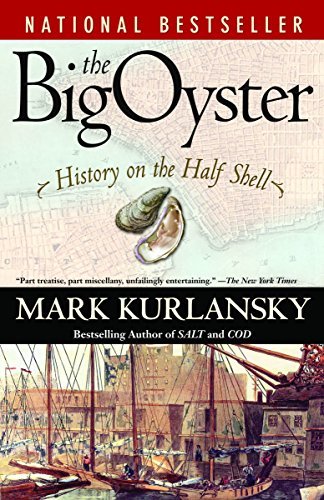
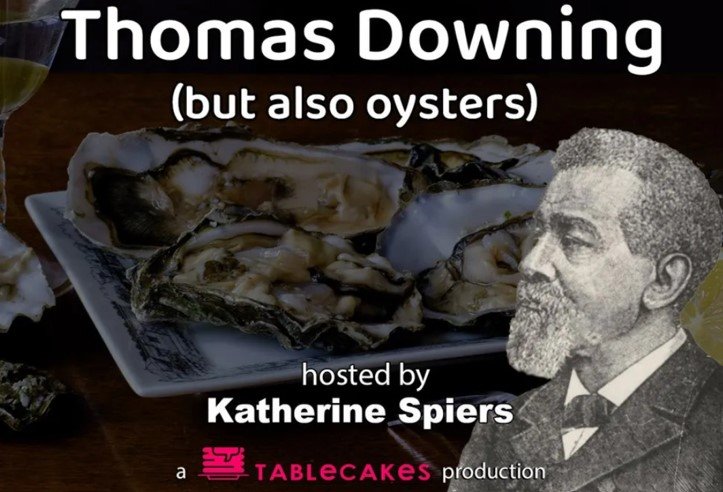


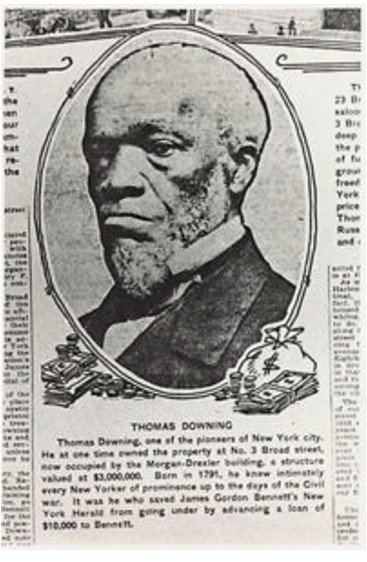
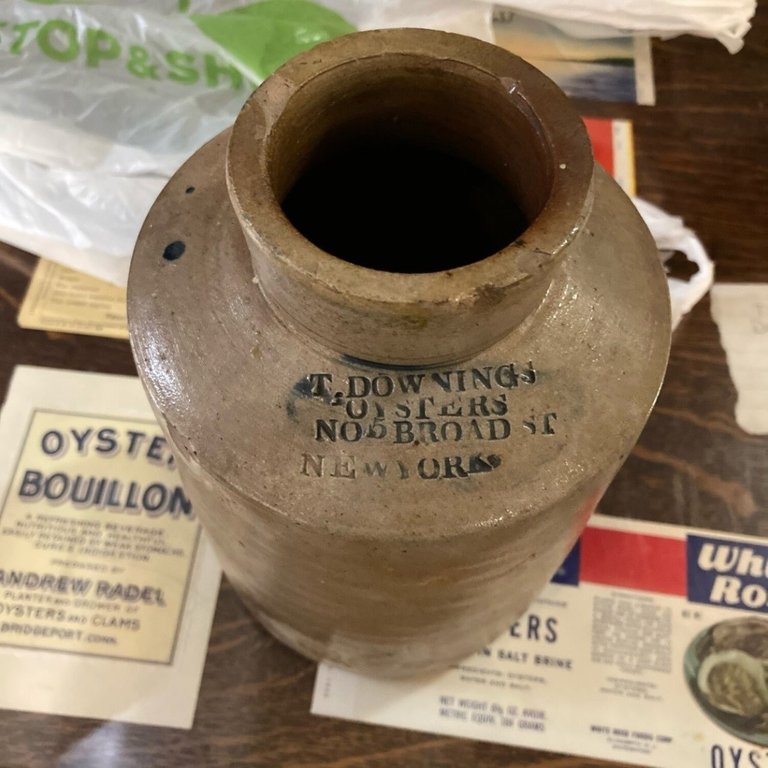
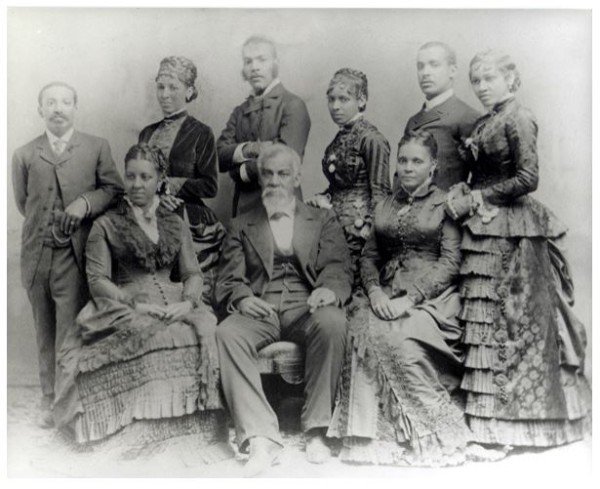
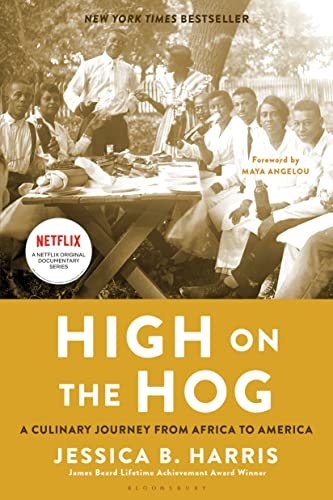
I learned from your post that Thomas Downing was a famous man. I was not aware of him before. Thanks for the detailed information about him.
Definitely an interesting slice of history, thank you again for reading and commenting!
"man who knew not tired"...This is the best course that we can have as we are reading about the life of the Downing. Do not get tired of trying to help our neighbor, fight injustice and work for progress
Perfectly said!
Copying/Pasting content (full or partial texts, video links, art, etc.) with adding very little original content is frowned upon by the community. Publishing such content could be considered exploitation of the "Hive Reward Pool" and may result in the account being Blacklisted.
Please refrain from copying and pasting, or decline the rewards on those posts going forward.
If you believe this comment is in error, please contact us in #appeals in Discord.